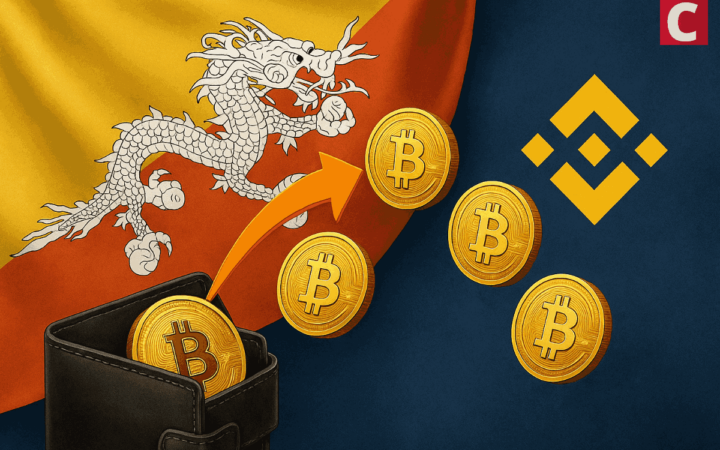Without any doubt, the Ethereum blockchain remains the core foundation of the DeFi narrative due to the ever-growing network of applications and developers relying on its infrastructure to power innovative financial systems. Hence, for a while, it was almost impossible for crypto holders other than Ethereum users to access the benefits of quality DeFi platforms without undergoing tiresome and often complex processes of exchanging their coins to Ether or supported ERC-20 tokens manually.
However, it is worth noting that the most compelling element of DeFi is how it continues to propel new paradigms relying on unconventional methods of navigating the financial landscape. Unsurprisingly, this disruptive approach has helped participants to find ways to bypass the inter-blockchain restrictions stifling the establishment of a truly diverse DeFi ecosystem spanning across many blockchains. Now, we have begun to witness the emergence of a wide array of solutions designed to provide easy means of engaging in the Ethereum ecosystem without necessarily relinquishing the value of their non-Ethereum-based tokens. As expected, at the heart of this emerging trend is Bitcoin DeFi.
The State of Bitcoin DeFi
Although the Bitcoin blockchain lacks the infrastructural model to enable interoperability and power a DeFi landscape like Ethereum, the asset is increasingly being used to provide liquidity in the DeFi market. Data from Btconethereum.com shows that over $1.5 billion worth of BTC is currently circulating in the Ethereum network. This is largely due to the growing list of solutions introducing new ways to tokenize Bitcoin. Like every other concept and innovation linked to the DeFi narrative, the goal was to establish trustless Bitcoin DeFi models by heavily relying on decentralized systems and smart contracts. However, over a year after Bitcoin DeFi came to the fore, experts suggest that custodied solutions, especially the exchange-based ones, have emerged as the most viable option. Why is this so?
For one, tokenized bitcoin offered by centralized counterparties are generally seamless and cost-effective. In most cases, they entail easy processes for users to swap their Bitcoin for Ethereum-compatible tokenized Bitcoin. In their most basic form, all a user needs to do is send Bitcoin to a wallet and instantly receive an equivalent value of tokenized Bitcoin. As such, it comes as no surprise that Wrapped BTC (WBTC), a product of BitGo, represents a large share of the Bitcoin DeFi market. At the time of writing, there are over $1.1 billion WBTC in circulation. In the distant second is rBTC as over $300 million worth of tokens currently locked in the Ethereum blockchain. Note that rBTC is a solution powered by Ren, which reportedly incorporates elements of custodied infrastructures in its operation.
Next on the list of top Bitcoin DeFi players is Huobi, with its HBTC occupying the third spot in terms of market share. In contrast, the fully-decentralized models are struggling to establish themselves as viable options. For instance, only around $5 million worth of tBTC exists. The inability of trustless Bitcoin-backed stablecoins to establish themselves in the market is indicative of the growing importance of trusted entities in the Bitcoin DeFi narrative. Besides, there are currently5006 BTC locked on Binance Chain, which further proves that exchanges are increasingly becoming the preferred DeFi portals for Bitcoin holders.
Kava to Reinvent Bitcoin DeFi
More importantly, Kava and its latest application, HARD Protocol, are implementing even more seamless systems for custodied solutions to mint and burn Bitcoin and other assets. As noted by Michael Ng, Co-founder of StakeWith.Us, both DeFi-focused protocols implement cross-chain functionality that strips away some of the cumbersome processes and restrictions peculiar to Bitcoin DeFi. He added:
“HARD Protocol (previously known as Harvest) is the first money lego to be built on Kava’s cross-chain DeFi ecosystem. Leveraging on Kava’s infrastructure not only allows the application to tap into Kava’s security, cross-chain features and price feeds, but also Kava’s community, which has been very supportive over the past year. We can’t wait to see what other money legos will start to be built and stack on one another – without the crazy gas fees of course.”
Hence, Kava has positioned itself at the forefront of the DeFi movement by introducing advanced liquidity generating infrastructure that are suitable for multiple crypto networks. With this, new players like Huobi and OKEx can up their pursuit for even more effective Bitcoin DeFi solutions. Also, Peter van Mourik, CEO at Chainlayer.io, while reiterating this sentiment, revealed that he expects Kava and HARD Protocol to optimize the DeFi ecosystem as a result of their advanced cross-chain functionalities:
“ChainLayer is excited to see Kava push forward on cross-chain money markets with HARD Protocol. HARD Protocol is a perfect next step in the plan that Kava has set out and it will be a great addition to the growing DeFi market, offering people more decentralized options to maximize their ROI on their assets with a healthy governance structure and low cost of transactions.”
Judging by the acceptance of users using chasing yield exchange custodied Bitcoin DeFi solutions, it is safe to say that centralized finance and the decentralized finance world are still interwoven.
Disclaimer: Coinspeaker is committed to providing unbiased and transparent reporting. This article aims to deliver accurate and timely information but should not be taken as financial or investment advice. Since market conditions can change rapidly, we encourage you to verify information on your own and consult with a professional before making any decisions based on this content.

Andrey Sergeenkov is an IEO Adviser, digital entrepreneur with more than 10 years of experience, Hackernoon and BitTorrent investor. Assisted in raising more than 40 mln USD investments for more than 20 start-ups. He believes that actual usefulness is the best PR for any project.





